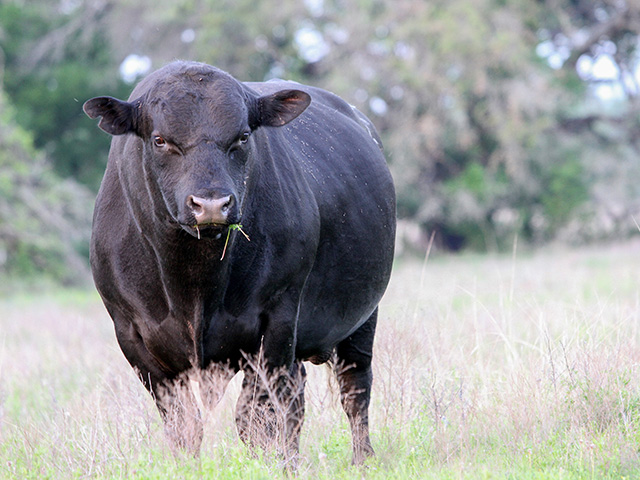Ask the Vet
Bad Day for a Bull
Question:
I turned our bull in with the cows, and when I checked on him the next day, I saw his penis was bent down at almost a 90-degree angle after attempting to breed cows. What do you think happened to him? Can he still breed cows? Is there anything I can or need to do to him?
Answer:
There are several possibilities, but let's start by saying your veterinarian needs to examine him soon. He is most likely done for the breeding season, and this situation may not be salvable.
P[L1] D[0x0] M[300x250] OOP[F] ADUNIT[] T[]
This is most likely a penile deviation. It can occur secondary to an injury to the penis that healed with scar tissue, creating the deviation. Spontaneous deviations can also occur.
A fibrous ligament runs along the top of the penis and keeps the penis straight during an erection. This ligament can slip off to the side, creating a spiral deviation. If the ligament is weak or stretched, it can create ventral deviation. If the ligament is too short, it can pull the penis into an S shape. Any of these problems can prevent a bull from breeding cows.
When we are talking about bulls, it's important to remember that they have a huge economic and genetic impact on a cow herd. And there are a number of common problems a herd bull can have that will limit or hinder his ability to breed including:
1. A preputial prolapse, for example, occurs when the prepuce is torn during breeding or traumatized while partially extended. Briars, brush, wire or junk in a pasture can scratch or lacerate the prepuce. In either case, the prepuce swells and cannot be fully retracted. The bull often looks like there is a red ball hanging out of the preputial opening. Mild cases may heal with sexual rest and conservative treatment, but more severe damage often requires surgery.
2. A hematoma of the penis, commonly called "broken penis," occurs during mating when the fibrous sheath around the penis is torn. Blood leaks out from the vascular tissue and forms a clot or hematoma. These bulls will have a hard swelling just in front of the scrotum. Some bulls can be healed with conservative treatment, but surgery is often required. In both the preputial prolapse and the hematoma, surgery may not be cost-effective or in your best long-term interest. Every situation, and every bull, will be different.
3. A persistent frenulum is a thin band of tissue connecting the penis to the prepuce of a bull at birth. It normally goes away before they are a year of age. This tissue can pull the penis into a downward curve. This condition can easily be detected during a breeding soundness evaluation (BSE) and corrected with a simple surgery.
4. Penile hair rings can form from riding activity. In some cases, they constrict and damage the penis, occasionally permanently. In most cases, these can be easily removed during a BSE.
5. Fibropapillomas or warts of the penis are fairly common, especially in young bulls. It's not unusual for these to spread among younger bulls raised together, due to riding activity. In many cases, these can be severe enough to prevent breeding.
Lastly, it's important to note that so many of these problems can easily be detected during an annual BSE. Every bull, every year, and this simple practice will prove to be one of your best investments.
(c) Copyright 2021 DTN, LLC. All rights reserved.






